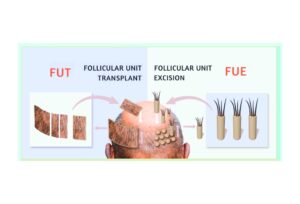As surgical hair transplant techniques become increasingly sophisticated, the demand for hair transplants has experienced a sharp uptick in recent years. Now, many of our patients find our Oakville based practice by searching for phrases like, “How much does a hair transplant cost?”.
As you are researching hair transplants, the first thing you should understand is that there’s no one correct answer to the question of cost. That’s because there are so many factors influencing the price of a hair transplant, including the number of grafts you need, the technique you and your surgeon choose and even the location of the clinic.
Is the Price Tag Within Your Reach?
If you’re frustrated with hair loss and considering getting a hair transplant, it’s perfectly understandable that you’d be reluctant to commit to this procedure without a clear picture of how much you can expect to pay. In the past, the cost of getting a hair transplant put the procedure out of reach for many people who were otherwise good candidates. However, technological advancements and the significant progress hair transplant specialists have been able to make in refining their techniques have made hair transplants both more accessible and more affordable.
Still, it’s important to understand and appreciate the fact that getting a hair transplant is a significant decision that will have long-lasting ramifications on your life. You owe it to yourself to do your homework and thoroughly research hair restoration clinics, surgeons and techniques.
How Much Can You Expect to Pay?
Hair transplant surgeons base their pricing on a variety of factors, which is why it can be difficult to estimate how much your transplant would cost if you haven’t talked to different doctors yet.
As you research how much you should budget for your hair transplant, here are a few essential things to keep in mind.
● Clinics often charge for hair transplants per individual graft. This approach may initially be somewhat misleading, as you might see advertised rates such as “$5 per graft,” which seems very inexpensive. However, if you end up needing 2,500 grafts, you can begin to appreciate how that cost would add up quickly.
● The price can significantly change based on where you get your surgery. Perhaps unsurprisingly, the average cost of a hair transplant procedure tends to be more expensive in large metropolitan areas that have a higher overall cost of living. Also, keep in mind that most health insurance policies will not offset the cost of a hair transplant. Even though it is a type of surgery, it is still an elective, or non-medically necessary, procedure.
● Who performs the procedure can influence the price. Some clinics offer a reduced price for hair transplants performed under doctor supervision by a team of nurses or surgical staff. In these cases, the hair transplant is still safe and effective, but the price is slightly lower because the doctors themselves are not doing the procedure.
An Investment in Yourself
As you now know, many factors come into play when it comes to the cost of a hair transplant. As we explained above, the biggest one is the number of grafts you need to have. You may also decide to have more than one procedure to achieve your desired results, which obviously results in additional expense. Other factors that impact the price tag include the amount of donor hair you have available, as well as its texture, colour and overall condition.
Male pattern baldness can vary, and your degree of baldness will influence how many grafts you need to restore your hair. To help you understand how far your hair loss has progressed, you can look at the Norwood scale, which has become the most common way to classify male hair loss.
On this scale, class 1 represents no visible hair loss, while class 7 is advanced baldness across the entire scalp. Using this scale to identify your level of baldness can help you determine whether you are a good candidate for a successful hair transplant. Most hair transplant surgeons can achieve success with patients who fall under classes 3 to 6. Class 7 cases have such a significant degree of baldness that their chances of recovering a full head of hair are lower.
What Hair Transplant Techniques Are Available?
The most advanced form of hair transplant is follicular unit excision (FUE), in which a doctor removes small bunches, or units, of hair from a donor area – usually on the sides or back of the head – and transplants them in the desired area. The doctor removes the grafts using a punch-like scalpel and reinserts them into the balding areas on the top and sides of the head.
Because the grafts are so tiny, FUE produces highly natural-looking results in the hands of a skilled surgeon. In fact, after the receptor site finishes healing, it is seamless and nearly impossible to detect.
By using a microscope during the procedure, hair transplant specialists can preserve the follicular units in excellent condition, placing transplants in the same direction as naturally growing hairs. FUE does not require incisions or stitches, and the procedure leaves no scars or noticeable marks.
Toronto-based hair restoration surgeons Dr Jonathan Huber and Dr Robert Jones are two of the world’s foremost specialists in FUE, and has been leading the vanguard of new developments in the technique. His approach closely follows each patient’s natural pattern of hair growth, which leads to excellent and personalized results.
Key Advantages of FUE
● Natural-looking results that last
● No scarring or stitches
● Scalp appearance returns to normal within a week
● Less discomfort and a shorter recovery period
● Outpatient procedure
● No linear scarring
● Results in noticeably increased hair density after just one treatment
FUE vs. Strip Surgery
What’s the difference between FUE and older hair transplantation techniques, such as strip surgery? The primary differentiator in these two methods is the way in which the doctor harvests the hair follicles. With the strip technique – which is also called follicular unit transplantation, or FUT – the surgeon removes a section of the scalp and dissects the individual hair follicles from the strip under a magnifier before grafting them into the desired area.
Both methods have advantages for different patients – possibly including the cost – but in general, the FUE technique is associated with more comfort, a shorter recovery time and more natural-looking results.
When Will You See Results?
For many hair restoration patients, it could take up to a year before you will see the complete results of your hair transplant. Though you’ll be able to see the new shape of your hairline immediately after the procedure, the hair grows gradually over the course of the first several months after the surgery.
By about the nine-month mark after surgery, roughly 80 per cent of your new hairs will be growing in, and the results will be very noticeable. By the one-year anniversary of your transplant, your results should largely be complete.
FUE Surgery at the Toronto Hair Transplant Surgeons
As one of the pioneers of FUE, Dr Jones was the first doctor in the world to perform large-scale hair transplants using this method. Today, both he and Dr Huber regularly perform 3,000- to 4,000-graft FUE cases in a single day. As full-time specialists in hair restoration surgery, our doctors have personally helped patients from every corner of the globe get the fuller, thicker head of hair they have been dreaming of.
If you are self-conscious about your thinning hair and ready to do something about it, contact the Toronto Hair Transplant Surgeons today at 877-789-4247

















